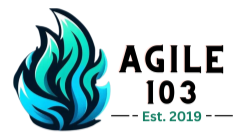Facilitated by Oma O.
Agile practitioners are often told that version control systems like Git are “for developers.” While coding knowledge helps, understanding the core concepts of Git is equally valuable for Scrum Masters, Product Owners, and Agile Coaches. Why? Because version control impacts team collaboration, transparency, and delivery predictability, cornerstones of Agile success.
Why Non-Technical Agilists Should Care About Git
You do not need to write code to benefit from knowing how Git works. Familiarity with Git concepts allows Agilists to:
-
Understand Team Collaboration: Git is the backbone of how developers collaborate. It prevents conflicts and tracks changes across contributors.
-
Improve Transparency: By understanding branches and commits, Agilists can better support backlog prioritization and sprint reviews.
-
Bridge Communication Gaps: With shared vocabulary, coaches and non-technical leads can engage more meaningfully in delivery conversations.
Harvard Business Review emphasizes that technical fluency, even at a conceptual level, strengthens cross-functional leadership.
Key Git Concepts Simplified
1. Repository (Repo)
Think of a repository as the single source of truth. It holds all project files and their full change history. Teams typically host repos on platforms like GitHub or GitLab.
2. Commits
A commit is a snapshot of progress. Each commit documents who made the change, when it happened, and why. It is essentially the Agile principle of transparency, applied to code.
3. Branches
Branches allow developers to experiment or build features without disrupting the main codebase. For Agilists, branches represent safe-to-fail experiments, aligning with Agile’s iterative nature.
4. Merges & Pull Requests
When changes are ready, they are merged into the main branch through a pull request. This is where code reviews happen—similar to a retrospective for code quality and alignment.
Agile Benefits of Version Control
-
Collaboration at Scale: Distributed teams can work asynchronously, confident that their work will align.
-
Quality Assurance: Code reviews via pull requests mirror Agile inspection and adaptation practices.
-
Traceability: Git makes it easy to trace which backlog item or story resulted in which changes.
-
Faster Feedback Loops: By linking commits to backlog items in Jira or Azure DevOps, teams achieve real-time progress visibility.
Atlassian’s Git tutorial provides an accessible non-technical overview.
How Agilists Can Engage Without Coding
-
Learn the Vocabulary: Knowing the difference between a branch and a fork helps in conversations.
-
Ask Better Questions: Instead of “Is the code ready?”, ask “Is the feature branch merged into main?”
-
Leverage Dashboards: Platforms like GitHub provide visual dashboards Agilists can use to track team flow.
-
Connect Git with Agile Tools: Many Agile boards integrate directly with Git commits, linking technical progress with backlog management.
Preparing for This Session
-
Review beginner-friendly Git resources such as GitHub’s guide.
-
Reflect on past sprint reviews where code changes seemed opaque. What questions could Git concepts have helped you ask?
-
Be ready to participate in exercises designed for non-technical professionals.
Version control is more than a developer’s tool, it is an Agile enabler.
Join our Version Control (Git) Concepts for Agilists (Non-Technical Focus) session to gain confidence, bridge communication gaps, and support your teams more effectively.
Bring transparency to every layer of delivery.
